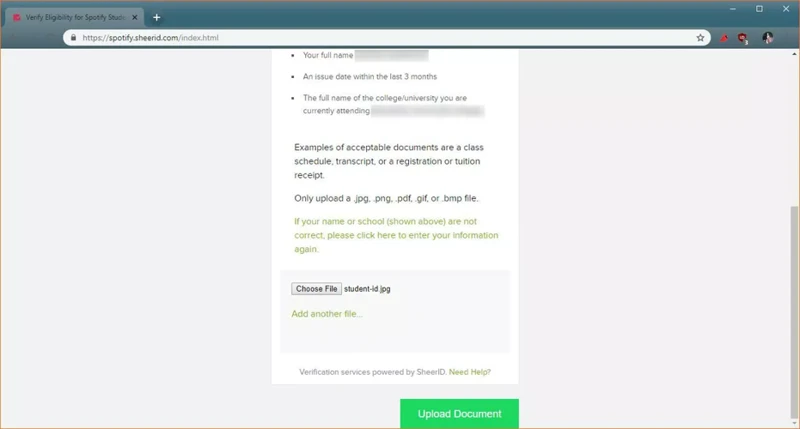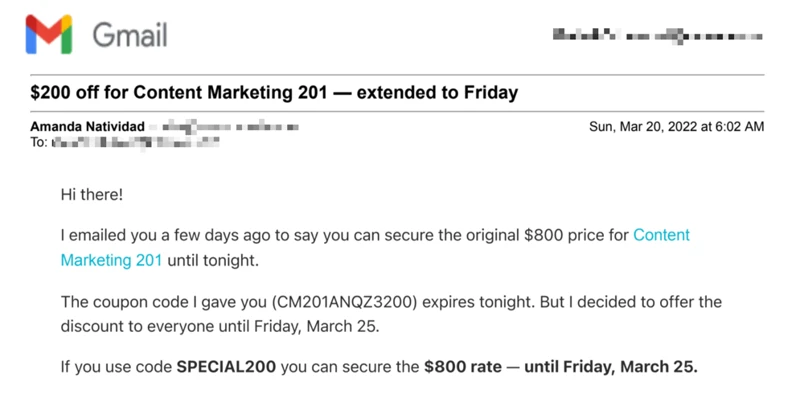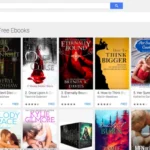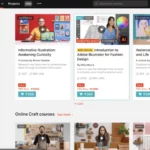In today’s competitive market, brands are constantly seeking ways to attract and retain loyal customers. One effective strategy that has emerged is offering exclusive discounts and promotions to college students. However, this approach comes with its challenges. Student discount abuse and maintaining the exclusivity of these offers can be a concern. To address these issues, re-verification has become a valuable tool for brands. By periodically verifying a student’s eligibility, brands can prevent discount abuse, identify graduated students for new promotions, and even convert students to full-priced options after graduation. This article explores the benefits of re-verification, including preventing long-term offer abuse, enhancing product experiences, and saving costs. Through digital verification methods and tools, brands can successfully implement re-verification and secure long-term customer loyalty.
Contents
- The Problem with College Student Verification
- The Benefits of Re-verification
- Converting Students to Full Price
- Enhancing Product Experience and Saving Costs
- Implementing Re-verification
- Conclusion
-
Frequently Asked Questions
- 1.1 How does relying on the .edu mail loop pose risks for college student verification?
- 1.2 What is the issue with rampant abuse of college student verification?
- 2.1 How does re-verification prevent long-term offer abuse?
- 2.2 How does re-verification help in identifying graduated students for new promotions?
- 3.1 What is the opportunity for software and subscription companies in converting students to full price?
- 3.2 What are the impressive conversion rates with SheerID?
- 4.1 How does allowing students to explore full product capabilities enhance their experience?
- 4.2 How does re-verification help in avoiding the need for separate product versions?
- 5.1 How can brands choose the re-verification interval?
- 5.2 What are the digital verification methods and tools available for implementing re-verification?
- Conclusion
- References
The Problem with College Student Verification

One of the main challenges with college student verification is the reliance on the .edu mail loop. While it may seem like a convenient and effective method for verifying student status, there are inherent risks associated with this approach. Firstly, it is easily spoofed, as there is now an entire industry dedicated to helping people obtain fake .edu addresses for the purpose of claiming student discounts. This undermines the integrity of the verification process and allows individuals who are no longer students to take advantage of these exclusive offers.
The abuse of college student verification is rampant. According to a survey conducted by SheerID, more than half of people with .edu addresses still have them after more than 5 years, even though they are no longer students. In fact, one in five adults has admitted to using an .edu email address to redeem a brand’s college student offer when they were no longer eligible. This abuse not only diminishes the exclusivity and perceived value of the offers but also poses a financial risk to brands, with discount abuse reaching as high as 35%.
The prevalence of discount abuse among college students is partly due to the perception that taking advantage of these perks is not considered abuse, but rather a benefit of having graduated from college. However, this mindset undermines the purpose of exclusive offers and can have a negative impact on a brand’s long-term loyalty.
To address these challenges, it is crucial for brands to implement more secure and reliable methods of college student verification. Digital verification offers a solution by ensuring that only valid students can redeem exclusive offers. This not only protects the brand’s margins by preventing discount abuse but also allows them to extend their offers to students who may not have a .edu address.
By overcoming the limitations of .edu college student verification, brands can maintain the exclusivity of their offers, enhance their reputation, and tap into the lucrative college student market. Implementing digital verification methods and tools, such as those offered by SheerID, can significantly mitigate the risks associated with college student verification and promote a more secure and trustworthy process.
The problem with college student verification lies in the ease of spoofing the .edu mail loop and the rampant abuse of this method. Brands must recognize the importance of implementing more robust verification processes to protect their brand, profits, and long-term loyalty. Digital verification offers a solution that ensures the exclusivity of offers while providing a secure and efficient method of verifying college student eligibility.
1.1 Risks of relying on .edu mail loop
Relying solely on the .edu mail loop for college student verification poses several risks to brands and their exclusive offers. One of the major risks is the rampant abuse of this verification method. A survey conducted by SheerID revealed that more than half (51%) of people with .edu email addresses still have it after more than 5 years, even when they are no longer students. Some colleges even encourage their alumni to keep their .edu addresses for life. This means that brands using the .edu mail loop as a verification method are vulnerable to individuals who are no longer eligible for student discounts but still use their .edu email addresses to redeem offers.
The survey found that a significant number of students (47% in the U.S. and 76% internationally) redeeming gated offers use common email domains like Gmail or Yahoo instead of their .edu addresses. This indicates that relying solely on .edu email verification excludes a large portion of potential customers, including international students who may not have .edu addresses.
Another risk of the .edu mail loop is the potential for offer abandonment. When brands send confirmation emails to .edu addresses, students have to leave the brand’s website and go to their email inbox to retrieve the confirmation. They then need to return to the brand’s website to complete the purchase. This multi-step process can be cumbersome for students, leading to a higher likelihood of them abandoning the offer altogether.
The integrity of the brand’s offer is also eroded when using the .edu mail loop. Recent news of Chinese retailers selling .edu email addresses has made students more cautious about providing their .edu email addresses. This skepticism can decrease consumer confidence and discourage students from engaging with brands that request their .edu email addresses. To protect their discounts from scammers and increase consumer confidence, retailers should consider retiring the .edu email loop as a verification method and adopting more sophisticated eligibility verification solutions that utilize real-time enrollment data without requiring sensitive information like .edu email addresses or social security numbers.
To mitigate these risks and ensure the effectiveness of student discount programs, brands need to explore alternative verification methods that are more reliable, accurate, and secure. Digital verification solutions can provide a more robust and efficient way to verify student eligibility, preventing abuse while attracting and retaining a wider student customer base.
[Link: /how-digital-verification-helps-prevent-offer-abuse/]
1.2 Rampant abuse of college student verification
The prevalence of discount abuse among college students is a serious concern for brands that offer exclusive discounts and promotions. Many people, even those who are otherwise honest, do not consider taking advantage of these perks as abuse. They see it as a benefit of having graduated from college. However, this mindset has led to rampant abuse of college student verification.
One reason for this abuse is the ease with which .edu email addresses, commonly used for verification, can be spoofed. There is now an entire industry dedicated to helping people obtain fake .edu addresses to claim student discounts. In fact, a survey conducted by SheerID revealed that more than half of people with .edu addresses still have them after more than five years, with some colleges even encouraging alumni to keep them for life. This enables individuals to continue using these addresses to redeem student offers even when they are no longer students.
This rise in student eligibility fraud is a cause for concern. Brands that rely solely on .edu email addresses for verification are putting their brand reputation and profits at risk. It is crucial for retailers to consider adopting more sophisticated forms of eligibility verification to protect their student discounts, academic products, and exclusive offers.
To combat this abuse, it is important for college students to take steps to protect themselves. One recommendation is to change passwords frequently and use secure passwords that include numbers, special characters, and long strings of numbers and letters. Additionally, utilizing secure password vaults like Last Pass or Keepass can help with password management.
The abuse of college student verification is a widespread problem that poses risks to brands offering student discounts. It is crucial for retailers to implement more advanced and secure methods of verification to protect their exclusive offers. By doing so, they can tap into the college student market while maintaining the integrity of their discounts and promotions.
Link: Benefits of Student Discount Programs
The Benefits of Re-verification

Re-verification offers several advantages for brands that provide student discounts and promotions. By periodically verifying a student’s eligibility, brands can ensure the integrity of their offers and maintain the exclusivity of these discounts. Let’s explore the benefits of re-verification in detail.
Preventing long-term offer abuse
One of the key benefits of re-verification is the prevention of long-term offer abuse. By requiring students to reverify their eligibility at regular intervals, brands can ensure that only eligible individuals continue to receive the exclusive discounts. This helps to prevent those who are no longer eligible, such as graduated students, from taking advantage of these offers. Re-verification acts as a safeguard, protecting the brand’s discounts and ensuring that they are reserved for the intended student community.
Identifying graduated students for new promotions
Re-verification also provides brands with the opportunity to identify graduated students for new promotions. By knowing when students have graduated, brands can deliver targeted promotions that cater to their changing needs and preferences. This allows brands to maintain a long-term relationship with their student customers and continue engaging them even after they have completed their studies. By delivering relevant promotions, brands can keep these customers loyal and increase their chances of converting them to full-priced options in the future.
Re-verification enables long-term protection and engagement, allowing brands to leverage the student demographic effectively. It helps to prevent discount abuse, identify graduated students for targeted promotions, and ultimately build long-term relationships with this valuable consumer group.
To learn more about how digital verification can help brands protect student discounts and promote engagement, you can read our article on the role of digital verification in delivering targeted promotions to students.
2.1 Preventing long-term offer abuse
One of the key challenges brands face when offering exclusive discounts to college students is the potential for long-term offer abuse. Many students continue to exploit these discounts even after they have graduated. This abuse not only undermines the exclusivity of the offer, but it also poses a risk to the brand’s profitability.
To address this issue, re-verification plays a crucial role. By periodically verifying a student’s eligibility, brands can prevent long-term offer abuse and ensure that only current students can access the discounts. Re-verification serves as a safeguard against individuals who continue to take advantage of the discounts even after they are no longer eligible.
Implementing re-verification helps brands maintain the integrity of their exclusive offers and protect their profitability. By regularly confirming a student’s status, brands can weed out those who are no longer eligible and provide discounts only to those who are currently enrolled. This ensures that the discounts are being utilized as intended and are not being exploited by individuals who have graduated.
Re-verification also serves as a deterrent to potential abusers. Knowing that their eligibility will be periodically checked, individuals are less likely to attempt to fraudulently claim the discounts. This helps brands maintain the exclusivity of their offers and ensures that they are reaching their intended target audience.
Preventing long-term offer abuse through re-verification is essential for brands that want to tap into the college student market. By implementing digital verification methods and tools, brands can effectively verify a student’s eligibility and prevent abuse of their exclusive discounts. This not only protects the brand’s profitability but also ensures that the discounts are reaching the intended audience and fostering long-term customer loyalty.
To learn more about the advantages of digital verification for student discounts, click here.
2.2 Identifying graduated students for new promotions
After graduation, it is crucial for brands to continue engaging with students and nurturing their loyalty. One way to achieve this is by identifying graduated students for new promotions. By doing so, brands can extend their offers and incentives to this specific segment of customers, ensuring their continued engagement and patronage.
To effectively identify graduated students, brands can leverage re-verification services. These services allow brands to verify the status of a student even after they have graduated from college. By periodically re-verifying a student’s eligibility, brands can stay updated on their customer base and target promotions specifically to those who have recently graduated.
Implementing re-verification services can be achieved through digital platforms that streamline the student verification process. These platforms offer efficient and accurate verification methods, ensuring that only eligible students receive the promotions. Through the use of these tools, brands can eliminate the need for manual verification processes and save valuable time and resources.
By identifying graduated students for new promotions, brands can tap into a unique customer segment. Graduated students are often in a transitional phase, exploring new opportunities and making significant life decisions. This presents an ideal opportunity for brands to offer promotions tailored to their specific needs and interests.
Targeting graduated students for promotions can also help brands build long-term relationships. By acknowledging and supporting customers’ milestones, brands can foster a sense of loyalty and connection. This can lead to increased brand advocacy and positive word-of-mouth recommendations within the graduated student community.
Identifying graduated students for new promotions is a valuable strategy for brands to maintain engagement and loyalty. By utilizing re-verification services and digital platforms, brands can ensure that their promotions reach the right audience. This targeted approach not only strengthens customer relationships but also maximizes the effectiveness of promotional efforts. By implementing re-verification and targeting graduated students, brands can secure long-term customer loyalty and drive business growth.
For more information on streamlining student verification through digital platforms, you can refer to our article on streamlining student verification.
For further insights on building long-term relationships with students through re-verification services, you can explore our article on building long-term relationships.
Converting Students to Full Price

One of the key challenges for brands offering student discounts is how to convert these students into full-paying customers after they graduate. This is especially crucial for software and subscription companies, who rely on recurring revenue for their business model.
One way to achieve this is by implementing re-verification processes. By periodically verifying a student’s eligibility, brands can ensure that only current students are accessing the discounted offers. This not only prevents long-term abuse of the discount program but also creates an opportunity to identify graduated students for new promotions.
Companies such as SheerID have reported impressive conversion rates through their re-verification systems. By utilizing digital verification methods and tools, brands can authenticate a student’s status in a seamless and efficient manner. This not only enhances the customer experience but also increases the chances of converting students into long-term, full-paying customers.
By allowing students to explore the full capabilities of their products or services during their discounted period, brands can showcase the value and benefits they offer. This can help students realize the value of the product and be more likely to continue using it even after their student discount expires.
Implementing re-verification eliminates the need for separate product versions or features for student customers. This saves costs for brands, as they don’t have to invest in creating and maintaining different versions of their products. Instead, they can focus on delivering a consistent and high-quality experience to all customers, regardless of their student status.
Converting students to full price is a crucial aspect of maintaining long-term customer loyalty. By implementing re-verification processes and utilizing digital verification methods, brands can ensure the exclusivity of their student discount offers while also increasing the chances of converting students into full-paying customers. This not only benefits the brand financially but also enhances the overall customer experience. To learn more about maximizing cost savings through digital verification for student discounts, click here.
3.1 The opportunity for software and subscription companies
Software and subscription companies have a unique opportunity when it comes to offering student discounts and promotions. By targeting college students, these companies can tap into a customer lifecycle preference of 10 years, potentially cultivating long-term customers.
One of the main advantages for software and subscription companies is the ability to provide full versions of their products to students, rather than creating stripped-down “student” versions. This is made possible through digital verification, which prevents abuse of the discount offers. By offering the full product experience to students, these companies can allow them to explore all the capabilities and benefits of their software.
Offering student discounts gives software and subscription companies the chance to build loyalty and engagement with their target audience. By providing personalized offers and promotions, these companies can not only attract new student customers but also nurture them through other marketing efforts. This data, obtained through digital verification, can be used to tailor future promotions and offers, leading to even greater loyalty.
In addition to building long-term customers, software and subscription companies can also benefit from cost savings through digital verification. By avoiding the need to create separate product versions for students, companies can streamline their development and distribution processes. This not only saves resources but also ensures that students have access to the full capabilities of the software.
By leveraging the opportunity to offer student discounts and promotions, software and subscription companies can secure long-term customer loyalty, enhance the product experience, and save costs through digital verification. This strategy allows them to tap into the student market and cultivate a strong customer base that will continue to support their brand well beyond their college years.
To learn more about the benefits of re-verification, including maximizing cost savings and student engagement, you can visit our article on maximizing cost savings with digital verification for student discounts.
3.2 Impressive conversion rates with SheerID
SheerID has proven to be a game-changer for brands looking to convert students to full-priced options after graduation. With its robust identity marketing platform, SheerID offers personalized offers and gated access to exclusive discounts, all backed by instant verification from a vast database of authoritative data sources.
The results have been truly impressive. Brands that have implemented SheerID’s identity marketing campaigns have witnessed remarkable conversion rates. By targeting students with personalized offers, brands have been able to showcase the value of their products at an easier entry point, making it more likely for students to make a purchase.
In fact, Shady Rays, a sunglasses brand, experienced outstanding results after expanding their identity marketing program to include students. Despite their customer base typically skewing older, they saw a disproportionately high redemption rate among students. This not only suggests the brand’s potential for growth within this lucrative audience but also demonstrates the effectiveness of SheerID’s platform.
The combined identity marketing campaigns, including the military discount, generated significant revenue for Shady Rays. They witnessed a 5x increase in revenue, a 5x boost in engagement and clickthrough rates, and a 3x rise in repeat purchases. These impressive conversion rates are a testament to the power of SheerID’s platform and its ability to effectively engage and convert student customers.
By leveraging SheerID’s identity marketing capabilities, brands can tap into the immense potential of the student market. The platform allows brands to create personalized offers that resonate with students, enticing them to make a purchase. Additionally, SheerID’s verification process ensures that only eligible students can access these exclusive offers, safeguarding the integrity of the discounts.
Implementing SheerID’s identity marketing platform is a smart move for brands looking to harness the full potential of the student market. With its impressive conversion rates and ability to create personalized offers, SheerID provides a powerful tool for brands to engage with students and deepen their brand relationships. To learn more about how SheerID can help brands achieve impressive conversion rates and drive student loyalty, visit their website at student-loyalty-engagement.
Enhancing Product Experience and Saving Costs

Re-verification not only helps brands prevent discount abuse and identify graduated students, but it also offers significant benefits in terms of enhancing product experience and saving costs. By implementing re-verification, brands can allow students to explore the full capabilities of their products, ensuring that they get the most out of their purchase. This personalized experience not only increases customer satisfaction but also strengthens the bond between the brand and the customer.
One of the key advantages of re-verification is that it eliminates the need for separate product versions. Instead of creating different versions of the product for students and non-students, brands can simply verify a student’s eligibility and provide them with access to the full product. This streamlines the development and maintenance process, saving costs in the long run.
By offering all students access to the complete product, brands can gather valuable insights and feedback. This data can be used to further improve the product and tailor it to the specific needs and preferences of the student demographic. This level of personalization not only enhances the overall product experience but also allows brands to stay ahead of the competition by continuously evolving and adapting to customer demands.
In addition to enhancing product experience, re-verification also helps brands save costs. By eliminating the need for separate product versions, brands can reduce development and maintenance expenses. By offering a personalized experience to students, brands can reduce the risk of customer churn and increase customer loyalty. This, in turn, leads to long-term cost savings as acquiring new customers is often more expensive than retaining existing ones.
Re-verification offers brands the opportunity to enhance product experience and save costs. By allowing students to explore the full product capabilities and avoiding the need for separate versions, brands can provide a personalized experience while streamlining development and maintenance processes. This not only increases customer satisfaction but also leads to long-term cost savings and customer loyalty. By implementing re-verification through digital verification methods and tools, brands can effectively secure long-term success in today’s competitive market.
4.1 Allowing students to explore full product capabilities
Allowing students to explore the full capabilities of a product is a crucial aspect of enhancing their overall experience. By providing students with access to all the features and functionalities of a product, they can fully engage and make the most of their learning experience. This approach promotes active and hands-on learning, giving students the opportunity to delve deeper into the subject matter and develop a deeper understanding of the concepts.
By allowing students to explore the full product capabilities, they can personalize their learning experience to suit their individual needs and preferences. This flexibility enables them to navigate through different learning processes, such as inquiry-based learning, which fosters creativity and critical thinking skills. Students can also leverage “just-in-time” learning, where they can acquire specific skills and knowledge by conducting research on platforms like Google or viewing tutorials on YouTube. This real-time access to resources allows students to apply their learnings immediately, enhancing their problem-solving skills and boosting their overall confidence.
Additionally, allowing students to explore the full product capabilities eliminates the need for separate product versions. This streamlines the user experience and saves costs for both the students and the software or subscription companies. Instead of limiting students to a restricted version of the product, they can fully immerse themselves in its features, functionalities, and updates. This not only increases engagement but also encourages students to become more invested in the product, leading to higher adoption rates and long-term customer loyalty.
By allowing students to explore the full capabilities of a product, brands can provide them with a comprehensive and enriching learning experience. This approach promotes active learning, personalization, and flexibility, allowing students to develop a deeper understanding of the subject matter and apply their learnings in real-time. Additionally, it eliminates the need for separate product versions, streamlining the user experience and saving costs for both students and software companies. By prioritizing student engagement and satisfaction, brands can secure long-term customer loyalty and drive success in the market.
4.2 Avoiding the need for separate product versions
When it comes to providing software to the student market, many companies opt for delivering their product through university licenses. While this can be advantageous in terms of brand awareness and institutional approval, it often means that companies lose direct communication with students. This lack of direct contact can result in several drawbacks.
Firstly, without the ability to communicate directly with students, companies are left in the dark about who is actually using their software. This lack of information makes it difficult to make informed decisions about product updates and improvements.
Additionally, without direct communication, companies are unable to announce new releases or share other important product information with students. This can hinder the overall user experience and prevent students from fully exploring the capabilities of the software.
By relying solely on university licenses, companies miss out on the opportunity to cultivate a full and satisfying adoption of their product. This means that students may not fully utilize the software’s features and may not develop the necessary skills that they can carry with them into the workplace after graduation.
To address these challenges, companies can implement re-verification methods. By requiring students to re-verify their eligibility on a regular basis, companies can not only prevent long-term offer abuse but also gain valuable insights into student engagement and usage patterns.
Re-verification provides companies with the opportunity to convert students to full-priced options after graduation. This can significantly increase revenue and customer loyalty. In fact, companies using SheerID have seen impressive conversion rates of up to 98% when students graduate.
By implementing re-verification, companies can avoid the need for separate product versions. This means that they can provide the same software to both students and full-paying customers, saving on the cost of creating and supporting separate versions.
Re-verification offers a comprehensive solution to the challenges faced by companies targeting the student market. It allows for better customer engagement, prevents abuse of discounts, and enables companies to cultivate a loyal customer base.
Implementing Re-verification
Implementing re-verification is a crucial step in protecting student discounts and promoting engagement. By periodically verifying a student’s eligibility, brands can ensure that only eligible customers are receiving discounts, maintaining the exclusivity and reputation of their offers. Here are two important aspects to consider when implementing re-verification:
Selecting the appropriate re-verification interval is essential to strike a balance between preventing long-term offer abuse and maintaining customer engagement. An annual re-verification is recommended as it ensures that customers continue to meet the eligibility criteria for the exclusive discounts. This yearly check helps to maintain the integrity of the program and ensures that only eligible individuals are benefiting from the offers. However, it is important to note that military veterans are an exception to this recommendation, as their status is generally expected to remain unchanged over time.
Digital verification methods and tools play a crucial role in implementing re-verification efficiently and effectively. Brands can leverage automated emails and in-app messages to notify customers when it’s time for them to reverify their eligibility. These notifications can include a link to a re-verification program form, making the process seamless for customers. By utilizing digital verification tools, brands can streamline the re-verification process and ensure a rigorous check to maintain the program’s integrity.
Implementing re-verification is a strategic approach that enables brands to protect their student discounts, prevent abuse, and promote customer engagement. By carefully choosing the re-verification interval and utilizing digital verification methods and tools, brands can successfully implement re-verification and secure long-term customer loyalty.
5.1 Choosing the re-verification interval
Choosing the right re-verification interval is crucial for maintaining the effectiveness of your gated offer and ensuring the integrity of your program. The interval refers to how often you require customers to reverify their eligibility for the discount or promotion.
When determining the re-verification interval, it is important to strike a balance. On one hand, you want to prevent long-term offer abuse by ensuring that only eligible individuals continue to receive the benefits. On the other hand, you want to avoid burdening customers with frequent re-verification requests that may lead to churn or disengagement.
To find the optimal interval, consider factors such as the nature of your offer, the typical duration of a customer’s eligibility (e.g. student enrollment period), and the resources available for managing the re-verification process.
For example, if your offer is specifically targeted towards students and their enrollment usually lasts for one academic year, setting an annual re-verification interval may be appropriate. This allows you to identify graduated students and deliver new promotions to keep them engaged while minimizing the risk of long-term offer abuse.
However, if your offer is available to a broader audience and eligibility criteria may change more frequently (e.g. employment status), you may need to consider a shorter re-verification interval, such as every six months or even quarterly. This ensures that only eligible individuals continue to receive the benefits and helps maintain the exclusivity of your offer.
It is important to regularly evaluate the effectiveness of your chosen re-verification interval. Monitor the conversion rates, customer feedback, and any instances of abuse or churn to determine if adjustments are necessary. A data-driven approach can help you optimize the interval and strike the right balance between preventing abuse and maintaining customer engagement.
By carefully selecting the re-verification interval, you can ensure that your gated offer remains effective in driving customer loyalty and differentiation while minimizing the risk of abuse and churn.
5.2 Digital verification methods and tools
Digital verification methods and tools play a crucial role in implementing re-verification for student discounts and promotions. These methods and tools ensure a seamless and efficient process, allowing brands to protect their offers and engage with students effectively.
One popular digital verification platform is SheerID, which offers a low-friction process for students to verify their eligibility without leaving the brand’s website. With SheerID, students provide minimal data such as their date of birth and the school they attend, instantly verifying their status as part of the purchase process.
Another digital verification method is the use of exclusive gated offers. By offering exclusive discounts that are only accessible to verified students, brands can appeal to students’ sense of belonging to a special group. This not only attracts students to shop with the brand but also increases their likelihood of becoming long-term customers.
Digital verification also enables re-verification at regular intervals, ensuring ongoing protection and engagement. Brands can set re-verification requirements annually or at any interval they choose. This helps prevent long-term offer abuse by ensuring that only eligible students continue to access the discounts.
For software and subscription companies, digital verification offers the opportunity to convert students to full-price customers after graduation. By verifying students’ graduation status, brands can deliver new promotions to keep them engaged and encourage them to upgrade to full-priced options. In fact, companies using SheerID have seen impressive conversion rates as high as 98% when students graduate.
Implementing digital verification methods and tools not only protects discounts but also enhances the overall product experience. Unlike traditional methods that require creating separate “student” versions of products, digital verification allows brands to provide full versions of their products to students. This saves costs by eliminating the need for additional resources and support for separate versions.
Digital verification methods and tools are essential for implementing re-verification strategies for student discounts and promotions. Platforms like SheerID offer a seamless verification process, while exclusive gated offers and re-verification intervals help protect offers and engage with students effectively. By leveraging digital verification, brands can enhance product experiences, save costs, and secure long-term customer loyalty.
Conclusion
In conclusion, re-verification is a valuable strategy for protecting student discounts and promoting engagement with college students. By periodically verifying a student’s eligibility, brands can prevent discount abuse and ensure that only eligible customers are benefiting from exclusive offers. This not only maintains the exclusivity and reputation of the brand’s discounts but also helps to build a strong emotional bond between the customer and the brand.
Additionally, re-verification provides an opportunity for brands to identify graduated students and deliver new promotions to keep them engaged. This helps to maintain a long-term relationship with the customer and secure their loyalty even after graduation. Software and subscription companies can also benefit from re-verification by converting students to full-priced options, as seen through impressive conversion rates with tools like SheerID.
Furthermore, re-verification enhances the product experience for students by allowing them to explore the full capabilities of the product. This eliminates the need for separate stripped-down versions of the product, saving companies money and resources. By providing students with personalized offers and discounts, brands can create a strong emotional bond and increase the likelihood of future purchases.
Implementing re-verification requires choosing the appropriate re-verification interval and utilizing digital verification methods and tools. Brands should ensure that the re-verification process is quick and easy to prevent customers from leaving due to lengthy verification procedures.
In conclusion, re-verification not only protects student discounts but also promotes engagement and long-term customer loyalty. By utilizing digital verification methods, brands can acquire and retain loyal customers while saving money and resources. Implementing re-verification is a powerful strategy for brands to secure their position in the competitive market and build strong relationships with college students.
Frequently Asked Questions
1.1 How does relying on the .edu mail loop pose risks for college student verification?
Relying on the .edu mail loop for college student verification poses risks because it can be easily manipulated or abused by individuals who are no longer eligible for student discounts.
1.2 What is the issue with rampant abuse of college student verification?
The rampant abuse of college student verification allows individuals who are no longer eligible for student discounts to take advantage of exclusive offers, which can result in loss of revenue for brands.
2.1 How does re-verification prevent long-term offer abuse?
Re-verification helps prevent long-term offer abuse by periodically verifying a consumer’s status, ensuring that only eligible individuals continue to benefit from exclusive discounts.
2.2 How does re-verification help in identifying graduated students for new promotions?
Re-verification allows brands to identify graduated students, providing an opportunity to deliver new promotions and offers to keep them engaged even after graduation.
3.1 What is the opportunity for software and subscription companies in converting students to full price?
Software and subscription companies have the opportunity to convert students to full price when they graduate, increasing their revenue and customer base.
3.2 What are the impressive conversion rates with SheerID?
Subscription companies using SheerID have seen impressive conversion rates as high as 98% when students graduate and transition to full-priced options.
4.1 How does allowing students to explore full product capabilities enhance their experience?
Allowing students to explore the full capabilities of a product enables them to build skills that will be valuable in the workplace after graduation, providing a more comprehensive and beneficial experience.
4.2 How does re-verification help in avoiding the need for separate product versions?
Re-verification eliminates the need for creating separate stripped-down versions of a product for students, saving companies the expense of supporting and maintaining multiple versions.
5.1 How can brands choose the re-verification interval?
Brands can choose the re-verification interval based on their specific needs and requirements, ensuring that the verification process remains effective and timely.
5.2 What are the digital verification methods and tools available for implementing re-verification?
There are various digital verification methods and tools available, such as identity verification software and online platforms, that brands can utilize to implement re-verification and protect their exclusive offers.
Conclusion
Re-verification is a valuable strategy for brands to protect student discounts, prevent abuse, and maintain the exclusivity of their offers. It also presents opportunities to convert students to full-priced options, enhance product experiences, and save costs. By implementing digital verification methods and tools, brands can successfully implement re-verification and secure long-term customer loyalty.







